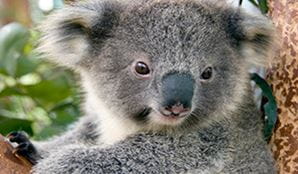Botany Bay Busy Bees
Kurnell area in Kamay Botany Bay National Park
Overview
Volunteer for bush regeneration in the Kurnell section of Kamay Botany Bay National Park. Join a friendly team of volunteers and get involved in protecting this parks historically significant vegetation.
- Work
- Bush regeneration, weed and pest management
- When
2nd and 4th Thursday of every month (excluding December and January), 9am–12pm.
- Grade
- Medium
- Entry fees
- Park entry fees apply
The Botany Bay Busy Bees have been working out of the Kurnell section of the Kamay Botany Bay National Park for over 20 years. Come along and work with friendly, like-minded people helping to preserve this historically significant site. Bush regeneration activities will focus on eradication of invasive weeds including Bitou Bush, Lantana and Asparagus Fern, with occasional planting activities.
This group meets twice a month at Kurnell Visitor Centre. You’ll receive on-the-job training and supervision in plant and weed identification, and general bush regeneration techniques. Come fully dressed ready to participate, and bring along water and any personal medication. Tea, coffee and biscuits are always provided, as are all the necessary tools, gloves and eye protection.
In the meantime, discover what the local bushland was like before European settlement.
Find out more about volunteering with us
Saving Our Species program
Australia is home to more than 500,000 animal and plant species, many of which are found nowhere else in the world. Saving our Species is a statewide conservation program that addresses the growing number of Australian animals and Australian native plants facing extinction.

Park info
- in the Kurnell area of Kamay Botany Bay National Park in the Sydney and surrounds region
7am–7.30pm August to May. 7am–5.30pm June to July.
Areas may have to close at times due to poor weather or fire danger.
-
Park entry fees:
$8 per vehicle per day applies in the Kurnell area only. The park has coin-operated pay and display machines - please bring correct coins. The park also has credit card accepting payment facilities.
Buy annual pass
What's nearby:
Things to do (69)
- Aboriginal culture (8)
- Birdwatching and wildlife encounters (20)
- Canoeing/paddling (9)
- Cultural heritage (5)
- Cycling (1)
- Educational activities (2)
- Fishing (10)
- Historic heritage (15)
- Other experiences (2)
- Photography (1)
- Picnics and barbecues (17)
- Sailing, boating and cruises (2)
- Sightseeing (23)
- Snorkelling and scuba (2)
- Swimming (6)
- Visitor centres (2)
- Walking (31)
- Waterfalls (1)
- Wildflowers (seasonal) (3)




